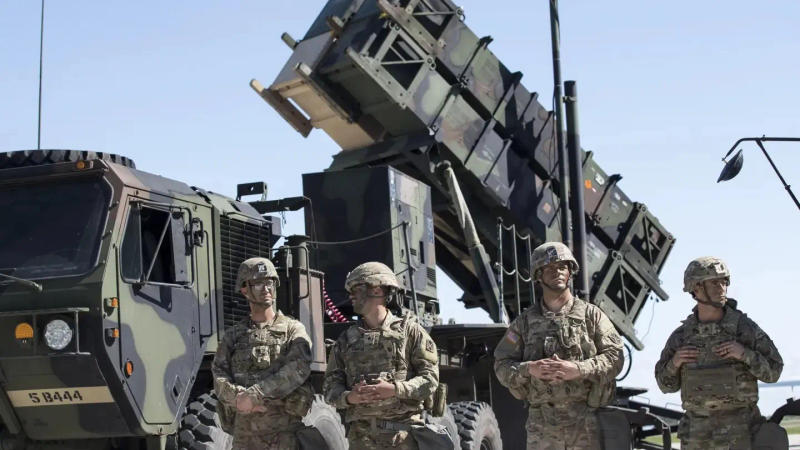Published 11:25 IST, May 22nd 2024
Lockheed Martin Tests PAC-3 MSE Interceptor, Neutralizing Mock Cruise Missile
Lockheed Martin successfully test-fired a Patriot PAC-3 MSE interceptor from a Mk 41 Vertical Launch System (VLS)-derived containerized launcher.

Nevada: Lockheed Martin has successfully test-fired a Patriot PAC-3 MSE interceptor from a Mk 41 Vertical Launch System (VLS)-derived containerized launcher, intercepting a mock cruise missile. This innovative combination provides an additional air and missile defence option for existing and future launchers, both on ships and land. This capability could address growing concerns within the U.S. Navy about maintaining a steady supply of surface-to-air and other missiles during potential high-end conflicts, such as one in the Pacific against China.
The recent test involved a Mk-41-derived four-cell Mk 70-series containerized launcher, according to a press release from Lockheed Martin. A modular and scalable version of the Aegis Combat System called the Virtualized Aegis Weapon System, was used to execute the launch. This system, like its parent, can network with various weapon systems and sensors. Lockheed Martin conducted the test in partnership with multiple Department of Defense Services and Components, though specific partners were not named.
New Test Highlights Versatility and Tactical Advantages
The test demonstrated the PAC-3 MSE’s ability to be cued by an AN/SPY-1-series radar using Aegis, following a validation last June. In the U.S. Navy, AN/SPY-1 radar variants are primary sensors linked to the Aegis Combat Systems on Ticonderoga-class cruisers and most Arleigh Burke-class destroyers. The PAC-3 MSE uses initial cueing to navigate to a target’s projected path using an inertial navigation system, with mid-course guidance updates provided via datalink. Upon reaching the target location, the interceptor’s active radar seeker engages the target, aiming for a hit-to-kill impact.

The PAC-3 MSE, with its small explosive warhead, ejects metal fragments to increase interception probability against smaller targets like cruise missiles or aircraft. This missile can also engage ballistic missiles during their terminal flight stages. The U.S. military views cruise missiles as a significant threat, with advanced air, sea, and ground-launched variants developed by near-peer competitors like China and Russia.
Adapting to Modern Threats with Advanced Missile Technology
Firing PAC-3 MSEs from any Mk-41-based launch system is a significant development. This includes BAE Systems' modular Adaptable Deck Launching System, an angled deck-mounted launcher for ships. Lockheed Martin notes that the PAC-3 MSE is compact enough for tactical-length Mk 41 versions, expanding potential platform integration. The Virtualized Aegis system further enhances operational flexibility.
Lockheed Martin’s successful test represents a significant advancement in missile defence technology, offering enhanced protection and strategic flexibility for the U.S. military and its allies. The integration of PAC-3 MSE interceptors with Mk 41 launch systems exemplifies the ongoing evolution of defence capabilities in response to modern threats.
Potential Implications for U.S. Military and Allied Forces
The U.S. Marine Corps plans to field a ground-based Tomahawk capability using a single-cell Mk 41-based launcher on an uncrewed Joint Light Tactical Vehicle (JLTV) derivative. The PAC-3 MSE/Mk 41 combination offers logistical benefits, complementing existing missile options like the SM-6. The SM-6, primarily a surface-to-air missile, also engages ballistic and hypersonic threats and can target ships and surface entities.

The U.S. Army's ground-based Typhon missile launch system, utilizing Mk 41-based launchers and an Aegis-derived fire control architecture, is designed to fire SM-6s and Tomahawk cruise missiles. Integrating PAC-3 MSEs into Typhon could bolster the Army's air and missile defence capabilities, addressing the high demand and limited size of the Patriot force. This integration highlights the potential for a versatile and resilient defence infrastructure, capable of adapting to evolving threats.
Updated 11:25 IST, May 22nd 2024




